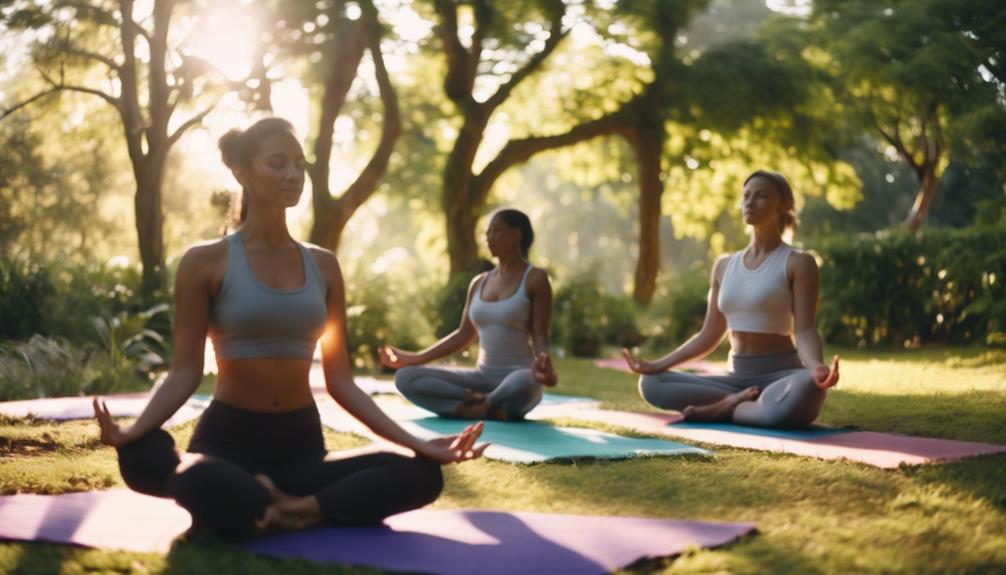How Many Yoga Poses

Yoga has become a global phenomenon, attracting millions of practitioners who seek physical fitness, mental clarity, and spiritual growth. One of the most frequently asked questions by beginners is, “How many yoga poses are there?” This blog post will delve into the variety of yoga poses, their classifications, and how understanding them can enhance your yoga practice.
The Basics of Yoga Poses
When we talk about yoga poses, or asanas, we refer to the physical postures that form the foundation of yoga practice. Traditionally, yoga encompasses a wide range of poses, each designed to promote flexibility, strength, balance, and relaxation. As of now, there are over 300 recognized yoga poses, but the exact number can vary depending on the style and lineage of yoga you are practicing. Understanding the basics of these poses is crucial for both beginners and seasoned practitioners.
Classifying Yoga Poses: Categories and Styles
Yoga poses can be classified into several categories, making it easier to understand how many yoga poses exist and how they serve different purposes. The major classifications include standing poses, seated poses, balance poses, twists, backbends, inversions, and restorative poses. Each category serves a unique function in the practice:
1. Standing Poses: Enhance strength and stability.
2. Seated Poses: Improve flexibility and promote calmness.
3. Balance Poses: Develop coordination and focus.
4. Twists: Aid in detoxification and spinal health.
5. Backbends: Open the heart and increase spinal flexibility.
6. Inversions: Improve circulation and boost energy levels.
7. Restorative Poses: Promote relaxation and stress relief.
Related Posts:
Each of these categories contributes to a well-rounded yoga practice, emphasizing different aspects of physical and mental well-being.
Popular Yoga Poses and Their Benefits
Among the vast array of yoga poses, certain asanas have gained immense popularity due to their numerous benefits. Here are a few notable ones:
– Downward-Facing Dog (Adho Mukha Svanasana): This foundational pose stretches the entire body while strengthening the arms and legs. It is commonly used in many yoga classes as a transition pose.
– Warrior I (Virabhadrasana I): This standing pose builds strength in the legs and opens the hips and chest, enhancing focus and determination.
– Child’s Pose (Balasana): A restorative pose that provides a gentle stretch for the back and hips, promoting relaxation and relieving stress.
– Tree Pose (Vrksasana): This balance pose improves concentration and stability while strengthening the legs and core.
By incorporating these poses into your practice, you can experience their profound physical and mental benefits.
The Evolution of Yoga Poses
The history of yoga is rich and complex, dating back thousands of years. The poses we practice today have evolved through various traditions and styles, including Hatha, Ashtanga, Iyengar, and Vinyasa. Each style has its own unique approach to asanas, which can contribute to how many yoga poses practitioners encounter.
For example, Hatha yoga focuses on the foundational poses that prepare the body for meditation, while Ashtanga yoga emphasizes a specific sequence of poses performed in a flowing manner. Understanding the evolution of these poses can deepen your appreciation for the practice and its transformative effects.
The Importance of Proper Alignment in Yoga Poses
One crucial aspect of practicing yoga poses is maintaining proper alignment. Proper alignment not only enhances the benefits of each pose but also minimizes the risk of injury. When learning how many yoga poses exist, it’s essential to emphasize that each pose has specific alignment principles.
For instance, in Warrior II (Virabhadrasana II), the front knee must align directly above the ankle to avoid strain. Similarly, in Downward-Facing Dog, ensuring that the spine remains straight and the wrists are aligned under the shoulders is vital. Understanding these alignment cues can significantly enhance your yoga practice, allowing for a safer and more effective experience.
How to Choose the Right Yoga Poses for Your Practice
With over 300 yoga poses to choose from, selecting the right ones for your practice can be overwhelming. It’s essential to consider your goals, fitness level, and any physical limitations you may have. Beginners should start with foundational poses that emphasize alignment and stability before progressing to more advanced asanas.
Additionally, incorporating a mix of pose categories can create a balanced practice. For example, a session could include standing poses for strength, seated poses for flexibility, and restorative poses for relaxation. Listening to your body and adjusting your practice according to your needs is key to a sustainable and enjoyable yoga journey.
The Role of Yoga Poses in Mindfulness and Meditation
Yoga is not solely about physical postures; it is also a practice of mindfulness and meditation. The connection between breath and movement is a fundamental aspect of yoga that enhances the benefits of each pose. By focusing on your breath while transitioning between poses, you cultivate mindfulness and present-moment awareness.
Many practitioners find that engaging in a regular yoga practice, including various poses, helps reduce stress, enhance emotional well-being, and improve overall mental clarity. Incorporating mindfulness techniques into your practice can lead to a deeper understanding of how many yoga poses can serve as gateways to self-discovery and inner peace.
Conclusion: Embrace the Diversity of Yoga Poses
In conclusion, the question of “how many yoga poses are there?” reveals a rich tapestry of physical and spiritual practices that has evolved over centuries. With over 300 recognized poses across various styles, each offering unique benefits, the world of yoga is diverse and inviting.
As you explore the different categories and popular asanas, remember that the essence of yoga lies in the journey, not merely in the number of poses you can master. Embrace the diversity of yoga poses, and let each one guide you toward greater physical health, mental clarity, and spiritual growth. Whether you’re a beginner or an experienced practitioner, there’s always more to learn and discover in the beautiful practice of yoga.Yoga BolsterDdpyoga